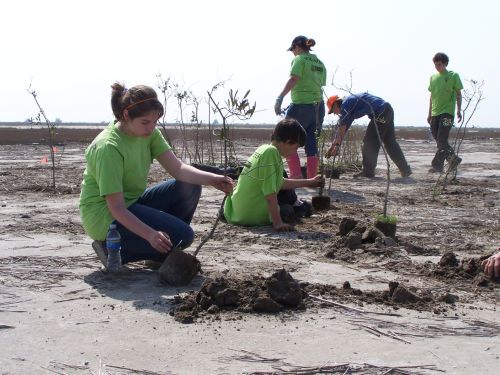
Mr. Charlie training next generation
September 25, 2013Port Fourchon busy as oilfield expands
September 25, 2013One million down, 11 million more to go.
That’s how many more dollars the Barataria-Terrebonne National Estuary Program needs to get started on its next coastal restoration project in Barataria Bay.
“Right now, we are working to raise money to restore small islands in Barataria Bay,” said Kerry St. Pe’ director of programs for the Barataria-Terrebonne National Estuary Program. “These islands are very important bird habitats for nesting for colonial birds like pelicans and roseate spoonbills.
“The oil spill killed a lot of the black mangrove trees in the bay. The islands are almost all gone because the black mangrove trees (whose root systems help hold islands together) were killed.”
Shell Oil Company has already committed $1 million toward the $12 million project. St. Pe’ hopes BTNEP will be able to secure more funds for the project through the Natural Resource Damage Assessment, but the process for receiving this funds can take time. Time is something the state’s fragile coast does not have.
“There is an early NRDA process, so maybe we can secure funds through that,” he said.
The Barataria Bay project would involve dredging and plantings, and BTNEP is currently looking for the best and cheapest soil for the project. The soil may be obtained from dredging in the Mississippi River, and clay may also be purchased from local sources. Plants for the project will come from the farm at Nicholls State University.
“We would like to begin the project as soon as possible, but we need the money first,” St. Pe’ said. “It would take about eight months to complete.”
Faced with budget cuts, the number of projects BTNEP has undertaken in the last few years has even declined.
“It costs just to fund the program, and our state budget has been cut the last seven or eight years,” he said. “There is less money for projects.”
In the last few years, BTNEP has completed coastal restoration projects in Timbalier Bay, Bay Chaland Headland and a ridge restoration near Port Fourchon. According to St. Pe’, BTNEP is still monitoring the success of plantings near the Port Fourchon area.
In the future, St. Pe’ would like to see more of the same kinds of projects – ridge restoration and marshes built up with sediment – in Plaquemines, Jefferson, St. Charles, Lafourche, Terrebonne and St. Mary parishes.
“As far as human protection, natural ridges along with wetlands provide the most storm protection,” he said. “The ridges should be about 6 feet in elevation and have trees 15 to 20 feet in the air. That does the most for knocking down storm surge.
“There also needs to be some freshwater input to help sustain the marshes. Plaquemines Parish is ideal for this. The ridge is just about gone on the east side of the river. The marsh is nearly gone, too.”
Should St. Pe’s hope come to fruition, sediment from the Mississippi or Atchafalaya rivers would likely be used in the marsh. Sand from the Ship Shoal area would also be placed at barrier islands.
“Barrier islands are important, too,” he said.
Even with all the work BTNEP has completed, the war against coastal erosion is far from over, and finding money to repair the land is the biggest opponent of coastal restoration.
“There are lots of problems that are not going away,” St. Pe’ said. “We are still losing wetlands. There is still a lot of work to do. We are still losing the battle because of money, basically. We don’t have enough to restore what needs to be restored. We want to restore as much as we can. We just need the money.
“The scale of land loss is just incredible – 1,900 square miles since 1932.”
Black mangrove trees are planted on a ridge near Port Fourchon. Staff from the Barataria-Terrebonne National Estuary Program hope to plant the same kind of trees on yet-to-be-built islands in the Barataria Bay.










